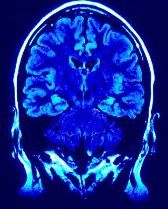- Clinical Technology
- Adult Immunization
- Hepatology
- Pediatric Immunization
- Screening
- Psychiatry
- Allergy
- Women's Health
- Cardiology
- Pediatrics
- Dermatology
- Endocrinology
- Pain Management
- Gastroenterology
- Infectious Disease
- Obesity Medicine
- Rheumatology
- Nephrology
- Neurology
- Pulmonology
Imaging Tests for Headaches: Are They Necessary-and When?
The majority of headaches are designated as primary (tension-type, migraine) for which imaging provides no benefit for either diagnosis or treatment.

In a previous posting, I discussed a guideline for the use of imaging tests for the diagnosis of low back pain (LBP) issued by the American Academy of Family Practice under the auspices of an initiative of the ABIM Foundation. Here I will discuss a guideline for testing for headaches issued by the American College of Radiology (ACR) as part of this same initiative.1
Headaches (HA) are a common complaint. I was once at lecture by an eminent HA specialist who said, only half-jokingly, that as they were so common that perhaps we should consider them the normal state and that instead of studying those with HA, our efforts would be better spent looking at those without HA to see what is abnormal about them.
The overwhelming majority of HA are primary HA-most notably tension-type and migraine HA-for which imaging provides no benefit for either diagnosis or treatment. HA can be quite frightening for patients, however, and the concern that a HA indicates some serious, possibly life-threatening disease process is not uncommon. It is therefore not surprising that various imaging tests, now most commonly MRIs and CT scans, are frequently ordered as part of the evaluation process and that patients may believe that they are receiving less than optimal care if such testing is not performed.
The ACR guideline states that contrary to this widely held belief that such testing is needed, it is actually rarely beneficial. A careful history and neurologic exam will determine whether imaging tests are indicated. Research has found that except in patients age 50 years or older, in virtually all cases where HA are symptoms of underlying pathology that needs to be treated, other signs and symptoms besides the pain are also present.2,3 Furthermore, these almost always precede or occur at the same time as the HA. Even for those older than 50, HA indicative of severe pathology are usually accompanied by other problems.
As with testing for LBP, unnecessary testing for HA can actually have a negative effect. Normal variations may be interpreted as potentially serious pathology and can result in further and, at times, more invasive testing. Also, patients who undergo CT scans are exposed to radiation. Finally, there is the financial cost to the patient and the health care system.
Unfortunately, I have seen many patients-including those who have had the same type of HA for years-(making the presence of a serious, treatable underlying pathology virtually impossible) undergo either MRI or CT when they have visited new physicians. Not surprisingly, these tests provided no useful information.
There are, of course, “red flags” that indicate that a HA may be a symptom of an underlying pathology and generally do suggest the need for further testing:
• Abnormalities on motor or sensory neurologic exams.
• Sudden or explosive HA. This may indicate an intracranial bleed or other intracranial pathology.
• HA different from ones previously experienced, especially in a patient 50 years or older. With age comes an increased incidence of disease processes that might cause HA, including tumors, stroke, and subdural hematoma. Of special significance is the possibility of temporal arteritis. This is a medical emergency in which a severe HA may be present without accompanying neurologic abnormalities. This disorder almost always occurs in patients over age 55. However, diagnosis is based on tests to determine the presence of inflammation, most notably the erythrocyte sedimentation rate, rather than on neuroimaging.
• A change in mental status.
• Onset of HA after head trauma.
• Presence of fever or nuchal rigidity. These may indicate meningitis. Although this diagnosis usually is made by lumbar puncture, imaging may be required to make sure the lumbar puncture can be safely performed.
• Seizures.
• Signs of increased intracranial pressure, such as papilledema.
• HA brought on by exertion. This may indicate the presence of a vascular abnormality. However, this is also a common occurrence with primary HA and especially migraines. It is important, therefore, to determine whether this is a chronic or new problem.
Identifying the presence of any of these red flags does not require the skills of a neurologist but should be easily within the abilities of every physician.
References:
1. Imaging tests for headaches-when you need them-and when you don’t. Available at: www.consumerhealthchoices.org/wp-content/uploads/2012/04/ChoosingwiselyHeadachesACR.pdf. Accessed September 26, 2012.
2. Evans RW. Diagnostic testing for the evaluation of headaches. Neurol Clin. 1996;14:1-26.
3. American College of Emergency Physicians Clinical Policies Subcommittee. Clinical policy: critical issues in the evaluation and management of adult patients presenting to the emergency department with acute headache. Ann Emerg Med. 2008;52:407-418.
